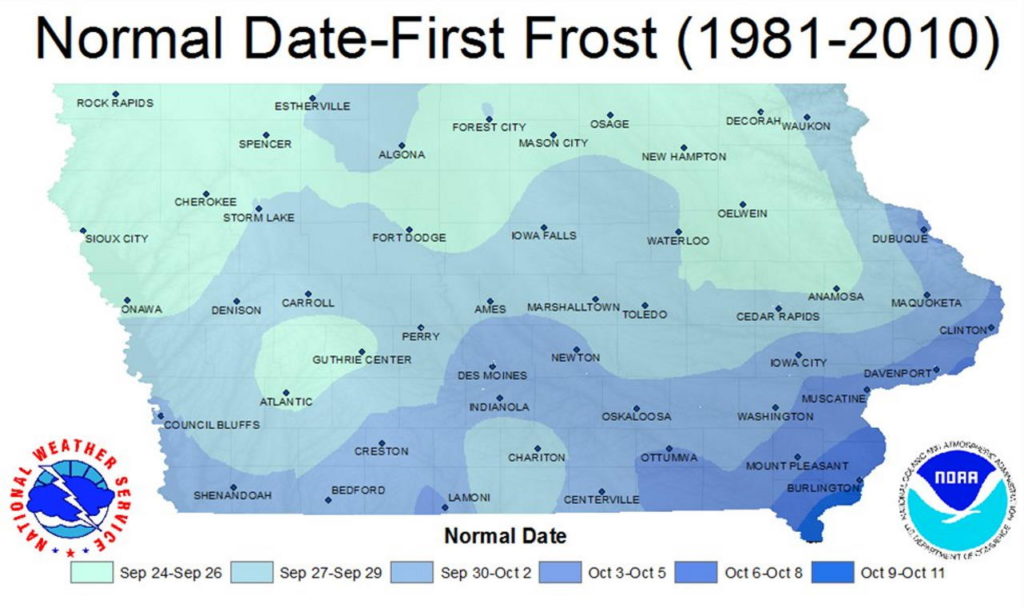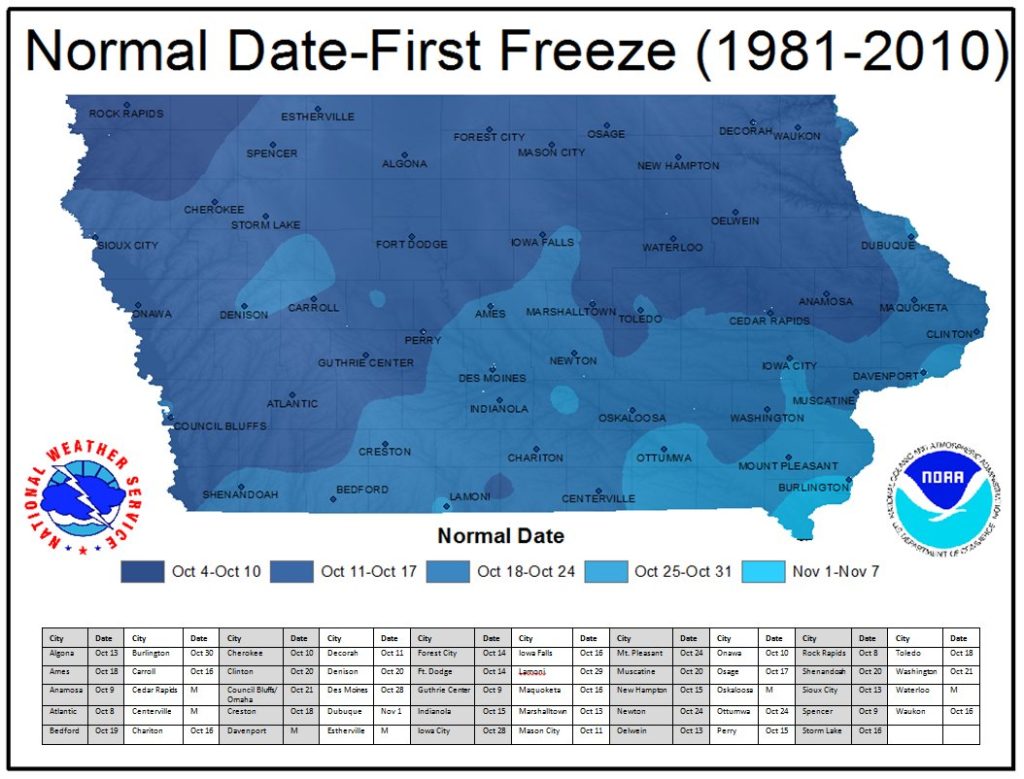When is the First Frost in Iowa?

As the temperatures begin to cool, and the calendar turns to September, it is starting to come to light that the first frost of the season will be here anytime now. The first frost of the season in an average year occurs near the end of September into early October across Iowa.
Here are a few cities and their average first frost date in the state of Iowa:
| City | Date |
| Algona | Sept. 26 |
| Ames | Sept. 29 |
| Anamosa | Sept. 27 |
| Atlantic | Sept. 21 |
| Bedford | Sept. 30 |
| Burlington | Oct. 7 |
| City | Date |
| Carroll | Sept. 26 |
| Chariton | Sept. 24 |
| Clinton | Oct. 1 |
| Council Bluffs | Oct. 1 |
| Des Moines | Oct. 6 |
| Fort Dodge | Sept. 25 |
| City | Date |
| Iowa City | Oct. 4 |
| Marshalltown | Sept. 25 |
| Newton | Oct. 1 |
| Ottumwa | Sept. 30 |
| Sioux City | Sept. 24 |
| Waterloo | Sept. 27 |
First Freeze of the Season in Iowa
Then, not long after the first frost, comes the first freeze. For it to be a freeze, temperatures have to be temperatures below 32 degrees Fahrenheit. Normally the first freeze widespread comes from mid to late October as shown in the chart below.

Enjoy the fall weather while it is here, as winter will be here before you know it, and that means the winter preparations around your house will be in full swing before too long.
What is a frost advisory?
A Frost Advisory means that temperatures are expected to fall into the mid 30s°F, which could lead to frost on vegetation. Frost advisories are only issued during the growing season. Cover any sensitive vegetation outdoors.
What is a freeze watch?
A Freeze Watch means that temperatures are expected to fall below 32°F within the next 12 to 48 hours. Freeze watches are only issued during the growing season. This cold air will likely kill any sensitive vegetation that is not brought indoors or protected.
What is a freeze warning?
A Freeze Warning means that temperatures are expected to fall below 32°F within the next 36 hours. Freeze warnings are only issued during the growing season. This cold air will likely kill any sensitive vegetation that is not brought indoors or protected.